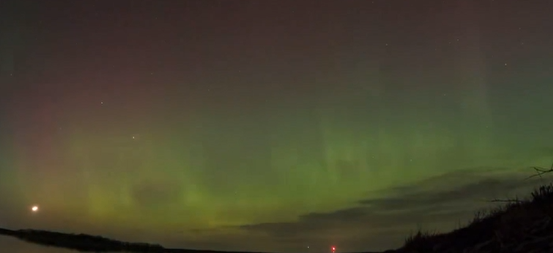MARQUETTE, Mich. (WZMQ) – The aurora borealis is a sight to behold and in the Upper Peninsula, it seems like we’ve seen it a lot more lately. The northern lights are seen typically in the wintertime with a dark enough sky, but there is certainly more than just a clear sky that can cause the peculiar amount of auroras. “The sun sends heat and lights our way but also energy electromagnetic energy and also electrified gasses,” said UP Meteorologist Karl Bohnak.
The solar winds are energy surges that flow from the sun, and every so often there are solar storms. These storms can hit the earth and our magnetic field blocks a majority of the ejection, the rest flows onto the north and south poles which is where visible streaks of the aurora borealis like the UP saw in early spring, could be visible.
“If the conditions are right. If the energy coming in is strong enough we end up getting auroras where these gasses interact with oxygen and nitrogen and produce the beautiful auroras that we see,” continued Bohnak.
When the energy actually hits the earth, the gasses from the storm can mix the colors of the northern lights. A higher level of oxygen may result in green or red lights and if there’s nitrogen available you’ll end up getting purple or blue auroras, but because we are heading into summer there may be fewer sightings.
“The challenge we have now that were heading into the late spring is we have a much shorter time where it’s dark at night,” commented National Weather Service Meteorologist Matt Zika.
Karl noted that astronomers have said that fall is the best time to see auroras, even though the lights are highly dependent on the cycle of the sun and not the change in season. “They’re not exactly sure why but that’s what they say. The sun has been very quiet over the last couple of decades actually,” continued Bohnak.
“Now the sun storminess is essentially building up to its peak which will probably happen sometime around 2025,” continued Zika.
The sun’s cycles are roughly 11 years long and 2025 is when it’s expected to reach its peak. The national weather service said this peak can result in more intense solar storms even in early spring or summer.
Click here for more information on the National Weather Service.
Click here for the National Weather Service solar viewing website.


















